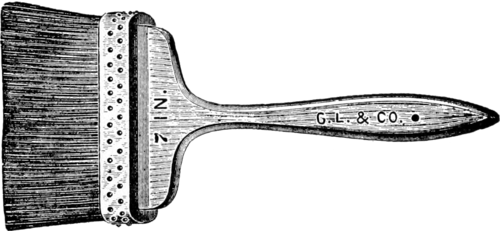semi-transparent, and when put upon a white ground produces a brownish tint or glaze.
Besides the black pigments described above, there are several other substances known as Prussian black, black lake and tannin black, which have been proposed as black pigments, but their use is so limited that it is not necessary to give a description of them.
Frankfort black is made of the lees of wine, from which the tartar has been washed, by burning in the manner of ivory black. Similar blacks are prepared from vine twigs and tendrils which contain tartar, also from peach-stones, etc., whence almond black and peach black, and the Indians employ for the same purpose the shell of the cocoanut.
Inferior Frankfort black is, in fact, merely the levigated charcoal of woods, of which the hardest, such as box and ebony, afford the best. Fine Frankfort black, though almost confined to copper-plate printers, is one of the best black pigments we possess, being of a fine neutral color, next in intensity to lamp black and more powerful than that of ivory. Strong light has the effect of deepening its color, yet the blacks employed in the printing of engravings have proved of very variable durability. It is probable that this black was used by some of the Flemish paint-

